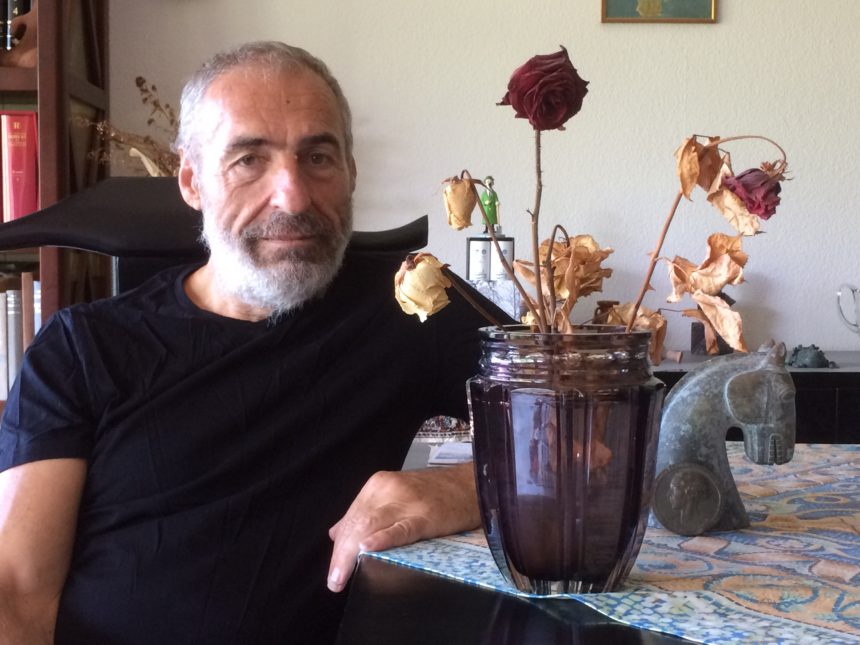A passion for glass – Pollux Hernúñez
Twenty years ago, Antonio Alonso asked me to work on the terminology of art glass. His intention was to exhibit for the first time the best pieces of his collection, mostly from the Art Nouveau and Art Deco periods, which he and his wife had been putting together since their arrival in Belgium and which they mainly procured by early morning weekend expeditions to flea markets from all over the country. The exhibition required a catalogue with a technically detailed description of each piece. Although at the time I was a terminologist in the Translation Service of the European Commission, I did not think I was the right person for the job, because our line of terminology had little to do with art.
However, fascinated by some of the pieces he showed me, I accepted his proposal and, from October 1998 until May of the following year, every Monday at around 6 p.m., I would go to his spacious apartment in Uccle; a veritable museum where, together with many other artistic objects, he kept some 300 vases of all shapes, sizes and colours, made with different casting, blowing and cutting techniques. A wondrous collection, to which he would occasionally add his latest acquisition, that he would show me with a glint in his eyes and a mischievous comment about not having revealed the exact price to his wife. Antonio was truly passionate about glass.
In the living room, on a table covered with a soft cloth, he would place a piece with great care and we would touch it, feel it, scrutinize it carefully, using a magnifying glass to look for any kind of particular sign (signatures, dates, marks, scratches), and then we would describe every single detail with regard to the dimensions, the technique used, the colours, motifs, etc. There were days when it would take us up to three hours to examine a single piece, although we could also inspect five or six pieces in a row if they shared some features. When we finished looking at a piece, he would take it carefully with both hands, leave the room and return with another. There is no better way to illustrate this man’s passion for the art of glass than the following anecdote.
One day he asked me to help him reach a large piece that was sitting high on a shelf together with a few others. He climbed up quickly on a stool, took the piece and, at that precise moment, as if cursed by fate, the seat broke in two, its legs collapsed and poor Antonio tumbled to the ground. But he performed a miraculous feat: the blow was tremendous and the vase could have been shattered to pieces, but he held on instinctively to the vase, raising it well above his head so that it remained unscathed despite the terrible fall!
After finalising the technical description of each piece, it was a matter of establishing the technical terms in Spanish and their equivalent in French, since the catalogue was to be bilingual. Despite my utter ignorance of the terminology of glass, I soon got hooked on the subject and started to work. I was assisted with considerable enthusiasm by Irene Morales, a young terminology trainee in Luxembourg, who was also captivated by the subject and researched and verified every term I sent to her. Needless to say, we ended up making terminology cards for the rest of the collection. Once the glossary was complete, we applied it to the description of each piece and that is how we compiled the catalogue for the exhibition.
This exhibition, which was only made up of 65 pieces from Val Saint-Lambert, was inaugurated in September 1999 at the Cervantes Institute in Brussels, from where it went to the National Glass Centre of La Granja, in Spain, where it remained until August 2000. The number of pieces was then doubled and the exhibition moved to the Santillana Foundation in the spring of 2001. Since 2005, a large part of the Alonso Collection has been permanently exhibited at the Design Museum in Ghent.
I will always be grateful to Antonio for having allowed me to acquire such an intimate knowledge of his passion. We also became friends, I learned a lot and I came to understand the reason for that passion: the wonder of the beauty of art glass, which can only be appreciated when you look at it carefully and calmly, allowing yourself to be transported through the universes it contains. I remember Antonio and his gaze every time I put flowers in a 1926 amethyst Ravell vase he generously gave me.
Pollux Hernúñez




